Papers by Ursula Iturraran-Viveros

<p>This work presents an implementation of elastic wave propagation using finite difference... more <p>This work presents an implementation of elastic wave propagation using finite differences to model 2D anisotropic materials and to simulate sonic waves along a borehole in a heterogeneous formation (in cylindrical coordinates) accelerated by using the new parallel computing devices (PCDs). For that purpose we use the industry open standard Open Computing Language (OpenCL) and an open-source toolkit called PyOpenCL. We describe the code and give a performance test in terms of speed using six different computing devices under different operating systems. A maximum speedup factor over 34.2, using the GPU is attained when compared with the execution of the same program in parallel using a CPU quad-core. To provide the scientific community with an open tool for numerical simulation of elastic wave propagation that runs on the PCDs, the full implementation of both problems is included as an open source.</p

In neural network modelling asynchronous Boltzmann machines are widely regarded as a slow learner... more In neural network modelling asynchronous Boltzmann machines are widely regarded as a slow learners because their operative mode is not parallel. This is because that part of the theory related to energy minimisation only permits one unit at a time to update its state. Learning with synchronous Boltzmann machines provides an attractive alternative provided that one can offer a suitable theoretical framework. The dynamics of the synchronous Boltzmann machine were first studied by W. A. Little [Little 1974]. In contrast to the extensive literature on asynchronous Boltzmann machines and simulated annealing, surprisingly little has been written on the synchronous model. There are some attempts to use the synchronous model [Azencott 1990], [Apolloni 1991], unfortunately they do not offer formal proofs of their proposals. The principal contribution of the present study is to provide a theoretical framework, leading to a learning algorithm able to learn an environmentally observed Markov pr...
SEG Technical Program Expanded Abstracts 2018, 2018

Journal of Hydrology, 2017
Soil bulk density (BD) is very important factor in land drainage and reclamation, irrigation sche... more Soil bulk density (BD) is very important factor in land drainage and reclamation, irrigation scheduling (for estimating the soil volumetric water content), and assessing soil carbon and nutrient stock as well as determining the pollutant mass balance in soils. Numerous pedotransfer functions have been suggested so far to relate the soil BD values to soil parameters (e.g. soil separates, carbon content, etc). The present paper aims at simulating soil BD using easily measured soil variables through heuristic gene expression programming (GEP), neural networks (NN), random forest (RF), support vector machine (SVM), and boosted regression trees (BT) techniques. The statistical Gamma test was utilized to identify the most influential soil parameters on BD. The applied models were assessed through kfold testing where all the available data patterns were involved in the both training and testing stages, which provide an accurate assessment of the models accuracy. Some existing 2 pedotransfer functions were also applied and compared with the heuristic models. The obtained results revealed that the heuristic GEP model outperformed the other applied models globally and per test stage. Nevertheless, the performance accuracy of the applied heuristic models was much better than those of the applied pedotransfer functions. Using kfold testing provides a more-in-detail judgment of the models.
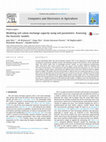
Computers and Electronics in Agriculture, 2017
Accurate knowledge about soil cation exchange capacity (CEC) is very important in land drainage a... more Accurate knowledge about soil cation exchange capacity (CEC) is very important in land drainage and reclamation, groundwater pollution studies and modeling chemical characteristics of the agricultural lands. The present study aims at developing heuristic models, e.g. gene expression programming (GEP), neuro-fuzzy (NF), neural network (NN), and support vector machine (SVM) for modeling soil CEC using soil parameters. Soil characteristic data including soil physical parameters (e.g. silt, clay and sand content), organic carbon, and pH from two different sites in Iran were utilized to feed the applied heuristic models. The models were assessed through a k-fold test data set scanning procedures, so a complete scan of the possible train and test patterns was carried out at each site. Comparison of the models showed that the NF outperforms the other applied models in both studied sites. The obtained results revealed that the performance of the applied models fluctuated throughout the test stages and between two sites, so a reliable assessment of the model should consider a complete scan of the utilized data set, which will be a good option for preventing partially valid conclusions obtained from assessing the models based on a simple data set assignment.

The Leading Edge, 2017
Surface reflection seismic inversion techniques are currently applied by the industry for mapping... more Surface reflection seismic inversion techniques are currently applied by the industry for mapping the rock physical properties of oil reservoirs. This information permits speeding up the interpretation process to ultimately provide well locations. At present, many companies require the inversion to be completed before any well is drilled. Inversion techniques can be applied to prestacked and poststacked seismic data. Prestacked data inversion is more complex than poststacked, but it provides more information for the interpreter (e.g., P-wave and S-wave impedances). On the other hand, poststacked inversion provides only the acoustic P-wave impedance. However, the main outcome of prestacked inversion is the increase in resolution when full waveforms are inverted. Currently, poststacked seismic inversion is used to correlate P-wave impedance with rock physical properties obtained from well logs. The logs are provided by a well near the survey line, allowing images of different rock pro...
Computer Physics Communications, 2014
Computational Science & Discovery, 2015
... been written on the synchronous model. There are some attempts to use the synchronous model [... more ... been written on the synchronous model. There are some attempts to use the synchronous model [Azencott 1990], [Apolloni 1991], unfortunately they do not offer formal proofs of their proposals. The principal contribution of the ...
SEG Technical Program Expanded Abstracts 2016, 2016
Geophysical Journal International, 2016
SEG Technical Program Expanded Abstracts 2015, 2015

Permeability and porosity are two fundamental reservoir properties which relate to the amount of ... more Permeability and porosity are two fundamental reservoir properties which relate to the amount of fluid contained in a reservoir and its ability to flow. The intrinsic attenuation is another important parameter since it is related to porosity, permeability, oil and gas saturation and these parameters significantly affect the seismic signature of a reservoir. We apply Artificial Neural Network (ANN) models to predict permeability (k) and porosity (ϕ) for a carbonate aquifer in southeastern Florida and to predict intrinsic attenuation (1/Q) for a sand-shale oil reservoir in northeast Texas. In this study, the Gamma test (a revolutionary estimator of the noise in a data set) has been used as a mathematically non-parametric nonlinear smooth modeling tool to choose the best input combination of seismic attributes to estimate k and ϕ, and the best combination of well-logs to estimate 1/Q. This saves time during the construction and training of ANN models and also sets a lower bound for the mean squared error to prevent over-training. The Neural Network method successfully delineates a highly permeable zone that corresponds to a high water production in the aquifer. The Gamma test found nonlinear relations that were not visible to linear regression allowing us to generalize the ANN estimations of k, ϕ and 1/Q for their respective sets of patterns that were not used during the learning phase.
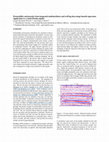
SEG Technical Program Expanded Abstracts 2013, 2013
Permeability and porosity estimations are essential to characterize both hydrocarbon reservoirs a... more Permeability and porosity estimations are essential to characterize both hydrocarbon reservoirs and aquifers. In most cases lateral variations of petrophysical properties cannot be delinated from aquired measurments at sparsely located wells. In this paper we integrate multiattributes from surface seismic data with well log permeability (k) and porosity (φ ) to produce permeabilty and porosity images for a carbonate aquifer in southestern Florida. We apply Smooth regression to select the best combination of seismic attributes by means of the Gamma test to aid in the construction of Artifical Neural Network models (ANN). This set of seismic attributes allows us to save time during the training of ANNs and sets a lower bound for Mean Square Errors (MSE), avoiding overfitting. We apply the trained ANNs to the seismic data to obtain interwell estimations for k and φ . We discuss and compare our results with those computed via linear regression. The Neural Network method successfully delineates a highly permeable zone that corresponds to a high water production in the aquifer.

SEG Technical Program Expanded Abstracts 2014, 2014
P-wave attenuation (Q -1 ), a powerful attribute, can be used as an indicator of lithology and fl... more P-wave attenuation (Q -1 ), a powerful attribute, can be used as an indicator of lithology and fluid saturation in the characterization of oil and gas reservoirs. The estimations of Q -1 from a new well at Waggoner reservoir were used to perform data analysis via the Gamma test, a mathematically non-parametric nonlinear smooth modeling tool, to choose the best input combination of well logs to train an artificial neural network (NN) for estimating Q -1 . Then the NN was applied to predict attenuation logs in two nearby old wells. The Q -1 logs detect oil saturated sand that was verified with a forward rock physical model. This is a significant result that shows for the first time that oil, gas, and water saturations of sand can be quantified from an attenuation anomaly estimated from full waveform sonic data. In addition, water, oil, and gas saturations of the sand were determined from Q -1 anomalies observed in the old wells. This confirms the production of the Upper Milham oil-saturated sand intercepted by the three wells. This study demonstrates that attenuation logs combined with rock physical models can be used to discriminate between those anomalies associated with lithology and those associated with oil and gas saturations.
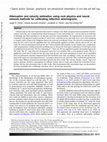
Interpretation, 2014
Velocity logs are the most important data used to evaluate rock, fluid, and geotechnical properti... more Velocity logs are the most important data used to evaluate rock, fluid, and geotechnical properties of hydrocarbon reservoirs. As a complementary physical property, P-wave attenuation (Q −1 ) can be used as an indicator of lithology and fluid saturation in oil and gas reservoir characterization. We implemented an inversion selfconsistent rock physical model to predict P-and S-wave velocities in two old wells near a new well containing a complete suite of logs at the Waggoner Ranch oil reservoir in northeast Texas. We selected a training data set from the new well to test the algorithm that was subsequently applied to predict velocity data in the two old wells. We used an attenuation log from the new well to perform data analysis via the Gamma test, a mathematically nonparametric nonlinear smooth modeling tool, to choose the best input combination of well logs to train an artificial neural network (NN) for estimating Q −1 . Then, the NN was applied to predict attenuation logs in the old wells. The Q −1 logs detected oil-saturated sand that was modeled with a rock physical model. This is a significant result that revealed for the first time that oil, gas, and water saturations of sand can be quantified from an attenuation anomaly estimated from full-waveform sonic data. In addition, water, oil, and gas saturations of the sand were determined from Q −1 anomalies observed in the old wells. This confirms the productivity of the Upper Milham oil-saturated sand intercepted by the three wells. The velocity, density, and Q −1 logs were used to generate synthetic seismograms to calibrate seismic data to verify and evaluate the work flow for predicting velocity and attenuation logs in older wells. This demonstrated that attenuation logs can discriminate between anomalies due to lithology and those due to oil and gas saturation.
Neurobiology of Aging, 1994

Inverse Problems in Science and Engineering, 2012
The aim of this article is to use artificial neural networks (ANNs) to solve a stochastic inverse... more The aim of this article is to use artificial neural networks (ANNs) to solve a stochastic inverse problem related to a model for voice production. Three parameters of the model are considered uncertain and random variables are associated to these parameters. For each random variable, a probability density function is constructed using the Maximum Entropy Principle. Substituting the three uncertain parameters for the associated random variables, the new model constructed is stochastic and its output is a stochastic process consisting of realizations of voice signals. The proposed inverse problem consists in mapping the three random variables from the voice signals and the use of ANNs to construct the solution of the inverse problem. Features are extracted from the output voice signals and taken as inputs of the designed ANN, whose outputs are random variables. The probability density functions of these random outputs are estimated and compared with the original ones. Two kinds of problems are discussed. At first, the same probability distribution is used to generate the voice signals and to solve the corresponding inverse stochastic problem. In this case, the actual probability density functions are very well fitted by the simulated ones. Then, different probability density functions are used to generate the voice signals to be used to train the ANN, and to solve the corresponding inverse problem. A good surprise appears: the quality of the estimation is almost unchanged, except for one of the random variables.



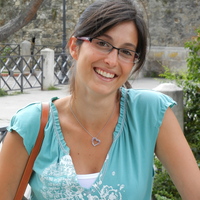
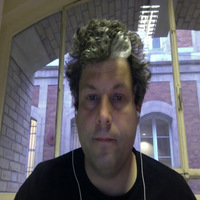

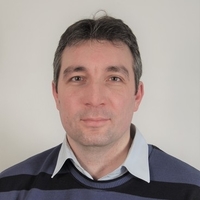

Uploads
Papers by Ursula Iturraran-Viveros